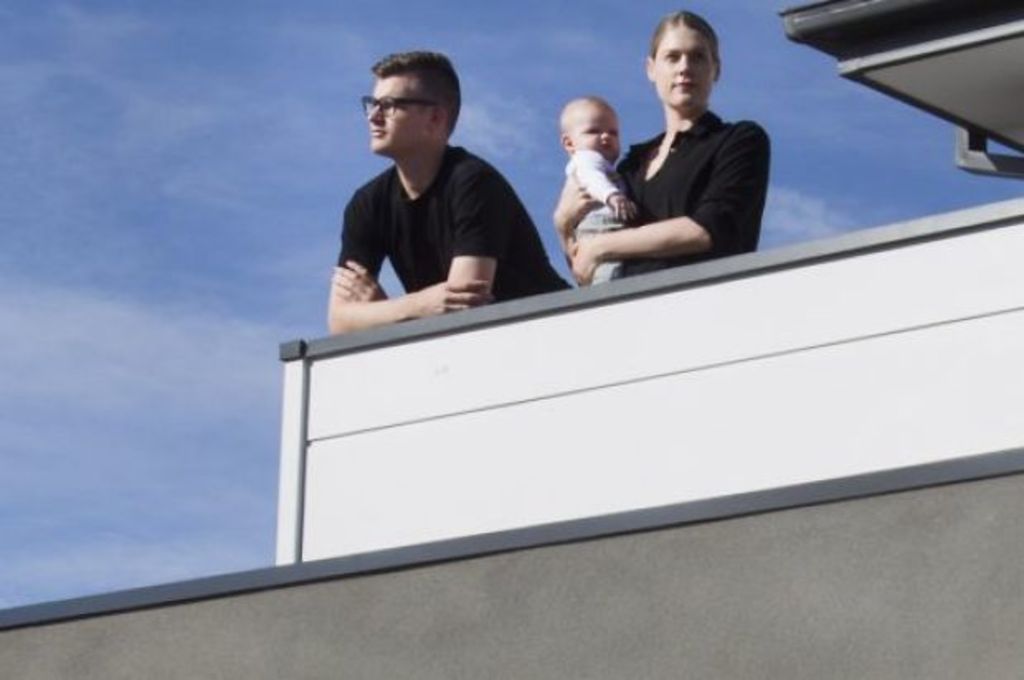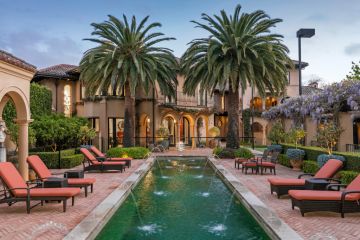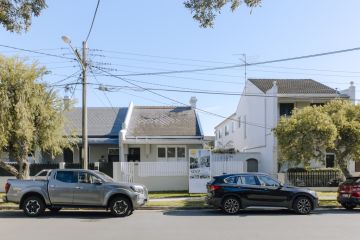Young Melbourne families delay home ownership amid apartment boom, unaffordability: expert

Young Melburnians are delaying the milestone decision to buy a house and are renting longer, confronted by unaffordability and a deluge of non-family friendly stock.
More than 42,000 new apartments in Melbourne are forecast between 2015 and 2019, according to valuation firm Charter Keck Cramer, but critics say the appetite of young buyers on a budget is out of step with what is being built.
Even for inner-city investors, prolific buyers of Melbourne’s apartments, minimal capital growth during the past five years suggests Melburnians are not sold on the idea of inner-city living – yet.
The number of first home buyer grants – redeemable only on new dwellings, such off-the-plan apartments and house and land packages on the urban fringe – have fallen to the lowest level in more than a decade, suggesting fewer takers for entry-level options.
New parents Emma Rule-Layton and Brett Layton put off buying a Preston townhouse this year, deciding the off-the-plan property, about $600,000, wasn’t suitable for the growing family’s needs.
The small business owners, of Perth, where they own an investment property, are raising their four-month old in a rented Coburg townhouse but are looking to rent a detached house further north.
“We want him to have his own room, a little space for home office or an extra room if our parents stay – and a little bit of grass would be nice,” said Ms Rule-Layton.
David McCloskey, of the Australian Population Research Institute, said families such as the Rule-Laytons were typical of Australia’s life-stage process: seeking detached housing after having children, and staying on for 30 or 40 years.
“There’s no moral element of saying they should or shouldn’t, this is purely how people have been living their lives,” Mr McCloskey said.
But he said the affordability issue was beginning to change that rite of passage.
In Sydney, where unaffordability has plagued the market for longer, the institute’s research showed families delayed major decisions such as living together and having children, by four or five years.
“The problem is, if they buy an apartment and they buy off the plan, and if the value drops, then they will actually be worse off than if they hadn’t done anything at all,” Mr McCloskey said.
Angie Zigomanis, of BIS Shrapnel, said banks were nervous about lending to buyers and developers, due to risks of defaulting.
“Most of the banks nowadays ask for greater coverage of the loan, typically by borrowing less or asking for a lot more presales,” Mr Zigomanis said.
Domain Group data shows those who bought units in the CBD, Southbank and Docklands five years ago have had negative and negligible price growth.
Melbourne’s unit median of $462,250 has grown 0.6 per cent in five years, and Southbank and Docklands have slipped 3.4 per cent and 2.3 per cent respectively.
But the size of apartments and type of buyer have significantly changed during the period, with smaller and one-bedroom apartments now more common, affecting medians.
“Melburnians are yet to embrace these areas the same way they have inner suburban areas,” Domain chief economist Andrew Wilson said. “And it will be a long journey, particularly given options going up in inner suburbs.”
The inner north, spanning Brunswick to Fitzroy and Abbotsford, is the most affordable area to buy an apartment, costing a weighted average of $518,230, according to Urbis research.
Population growth supported demand for new housing, Urbis head of economics and marketing Mark Dawson said, with new CBD sales a big driver of the apartment market in the last quarter of 2015.
Mirvac head of residential John Carfi said his firm’s experience was that local families were embracing and adapting to an apartment lifestyle.
“To some extent the design brief for projects needs to take into price relativity, to ensure it meets the affordability needs of those people,” he said.
Mirvac launches a tower a year at Docklands, Mr Carfi said, and these are popular with owner-occupiers.
Little Projects sales and marketing general manager Fergus Humphries said developers needed to consider larger apartments to attract families.
“In most of our projects we incorporate spacious three-bedroom apartments, because there is increasing demand from families and downsizers wanting a high-quality alternative to a house; in a better location at a more affordable price,” Mr Humphries said.
Swimming pools and gyms have long been standard amenities, but Little has installed a childcare centre at its Tip Top development at Brunswick East.
We recommend
States
Capital Cities
Capital Cities - Rentals
Popular Areas
Allhomes
More






